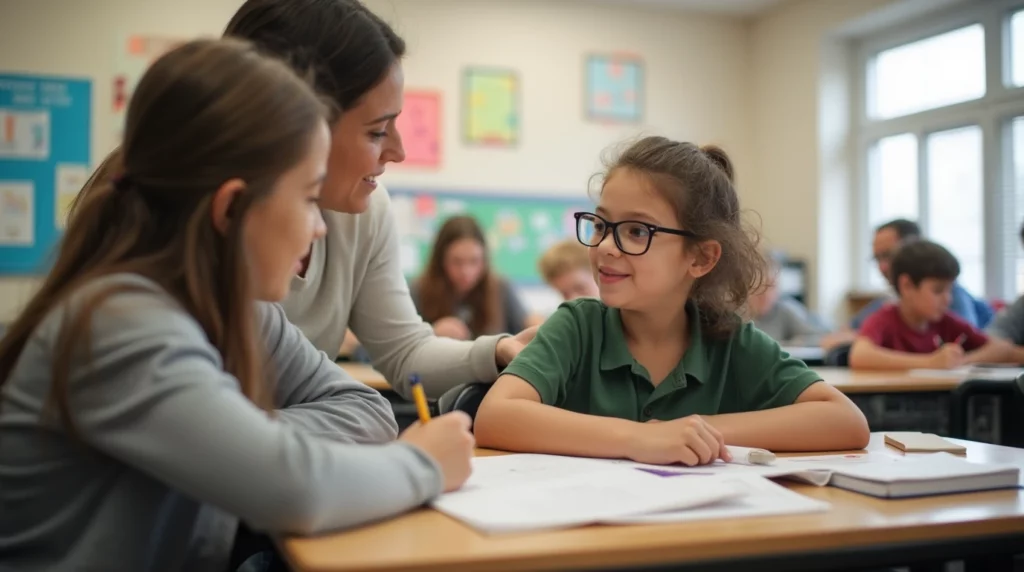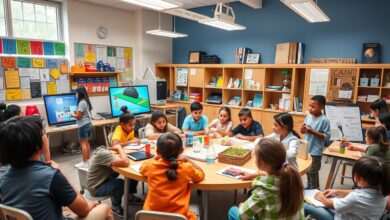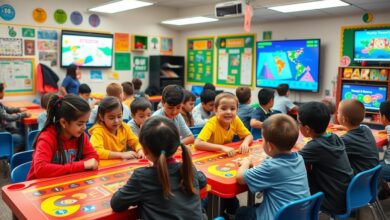Learning Difficulties: Types, Causes, and Support Strategies

Learning difficulties are challenges that appear in many people’s lives. These difficulties don’t mean a lack of intelligence; rather, they reflect a different way of understanding information.
There are many types of learning difficulties. This requires deep understanding and early diagnosis. These difficulties can affect skills such as reading, writing, and arithmetic.
What are Learning Difficulties and How are They Diagnosed?
Learning difficulties are educational challenges that affect children. Learning difficulty specialists recognize these challenges as conditions that impact a child’s ability to learn basic skills.
Early Signs of Learning Difficulties
Early signs of learning difficulties appear in childhood. Some of the most important signs are:
- Delayed language acquisition
- Difficulties in reading and writing
- Problems with concentration and attention
- Challenges in understanding simple instructions
The Role of Specialists in Diagnosis
Learning difficulty specialists play an important role in diagnosing these difficulties. Diagnosis relies on specialized tests and evaluations. These tests help understand the child’s needs.
The Importance of Early Diagnosis
Early diagnosis of learning difficulties is very important. Early learning difficulty diagnosis increases the chances of providing appropriate support. This helps the child overcome educational challenges.
“Early diagnosis is the key to a child’s success in their educational journey.”
Main Causes of Learning Difficulties

Learning difficulties are a complex phenomenon. They arise from several factors, which can be divided into genetic and environmental factors.
Genetic Factors
Genetic factors play a large role. These differences can be passed from parents to children. This affects how the brain processes information.
- Genetic differences in brain structure
- Family history of learning difficulties
- Genetic changes associated with information processing
Environmental Factors
Environmental factors include conditions that affect brain development. These conditions impact learning abilities.
| Type of Environmental Factor | Potential Impact |
|---|---|
| Exposure to toxic substances | Impaired brain development |
| Complications during pregnancy | Delayed neurological development |
| Early brain injuries | Information processing disorders |
It is important to understand that learning difficulties are not a result of low intelligence, but rather a difference in how the brain processes information.
It should be noted that the causes of learning difficulties are multiple and complex. They often result from an interaction between genetic and environmental factors. Early diagnosis and appropriate support help greatly in improving a child’s learning abilities.
Common Types of Learning Difficulties

Learning difficulties vary from person to person. Many people face challenges in reading, writing, and arithmetic. Let’s look at common types of learning difficulties.
Dyslexia
Dyslexia affects many people. Individuals with it face difficulties in:
- Recognizing words quickly
- Understanding written texts
- Connecting letters to their sounds
Writing Difficulties
Writing difficulties, or dysgraphia, affect an individual’s writing ability. These difficulties manifest through:
- Poor spelling
- Difficulty organizing thoughts in writing
- Problems with handwriting and letter formation
Arithmetic Difficulties
Arithmetic difficulties, or dyscalculia, affect the understanding of mathematics. Individuals with it face difficulties in:
- Understanding basic mathematical concepts
- Performing calculations
- Solving complex mathematical problems
Specialists state that early diagnosis and providing appropriate support significantly help in overcoming these difficulties.
Impact of Learning Difficulties on Social and Psychological Life
Learning difficulties affect not only school but also psychological and social life deeply. Individuals with learning difficulties face significant challenges that impact their self-esteem.
The psychological impact of learning difficulties appears in several aspects:
- Reduced self-confidence
- Constant feelings of frustration
- Social anxiety
- Feelings of isolation
The social impact of learning difficulties appears in difficulty building friendships. Individuals feel stressed when communicating with others.
| Area | Impacts |
|---|---|
| Psychological | Weakened self-esteem |
| Social | Communication difficulties |
| Emotional | Feelings of isolation |
“Understanding learning difficulties is the fundamental key to supporting and empowering individuals.”
It’s important to support individuals with learning difficulties. Continuous psychological and social support should be provided. This helps develop their skills and increase their self-confidence.
Strategies for Dealing with Learning Difficulties at Home
Family support for learning difficulties plays a big role in a student’s success. A suitable home learning environment greatly helps in overcoming challenges.
The Supportive Role of the Family
To create a supportive environment at home, the family can:
- Boost self-confidence and continuous motivation
- Actively listen and respect the student’s needs
- Provide emotional and academic support
Organizing the Home Learning Environment
An organized home learning environment helps a lot. Here are some strategies:
| Strategy | Application |
|---|---|
| Reduce distractions | Create a quiet and organized study space |
| Use visual aids | Develop visual charts and schedules for studying |
| Divide tasks | Break down academic tasks into small, clear steps |
Success starts at home: support and understanding are the main key in facing learning difficulties.
It’s important that strategies adapt to each student’s needs. The focus should be on strengths and building self-confidence.
The Role of the School in Supporting Students with Learning Difficulties
Schools play an important role in helping students who face learning difficulties. School support should be comprehensive and integrated. This requires understanding each student’s needs individually.
Individualized educational programs are fundamental in this area. These programs help in:
- Identifying each student’s special needs
- Setting realistic educational goals
- Continuously monitoring progress
Curriculum adaptation is an essential part of school support. This includes modifying teaching methods and assessment to suit different learning styles.
| Support Strategies | Goal |
|---|---|
| Collaborative learning | Enhance interaction and communication |
| Diverse teaching methods | Stimulate different learning processes |
| Psychological support | Boost self-confidence |
The school environment should be inclusive and supportive. Every student should feel valued and respected regardless of their abilities.
“Every student has unique potential that deserves discovery and development.”
Modern Technologies and Learning Aids

Modern technology has opened new horizons for people facing learning difficulties. It offers innovative solutions that help improve the learning process and enhance self-confidence.
Supportive Educational Applications
There are various educational applications designed to support individuals with learning difficulties:
- Text-to-speech applications to help individuals with dyslexia
- Interactive math applications to simplify arithmetic concepts
- Advanced spell-checking and grammar tools
Digital Support Programs
Digital support programs offer effective tools for organizing information and improving learning:
| Program Type | Main Function | Features |
|---|---|---|
| Mind mapping tools | Organizing ideas | Facilitate understanding of complex information |
| Organization programs | Task arrangement | Improve time management skills |
When choosing assistive technology, it’s important to focus on your individual needs. Choose applications that suit your learning style and help you achieve your goals.
“Technology is not a substitute for learning, but a tool to facilitate the learning process.”
Rights of Students with Learning Difficulties

Inclusive education is a right for every student, including those with learning difficulties. Inclusive education laws protect their rights and ensure equal opportunities for them.
The rights of individuals with learning difficulties include legal guarantees to support them in education:
- The right to free and appropriate education
- Access to necessary accommodations and facilities
- Specialized educational support
- An inclusive and supportive learning environment
Legal frameworks play a major role in protecting the rights of students with learning difficulties. Legal changes emphasize the importance of granting them the same opportunities as their peers.
The primary goal of inclusive education laws is to ensure every student’s right to learn and develop regardless of their abilities.
The rights of individuals with learning difficulties guarantee protection from discrimination and access to individualized educational plans. They are entitled to:
- Customized assessments
- Assistive technology tools
- Psychological and social support
- Appropriate vocational training programs
It’s important for parents and teachers to be aware of these rights and to ensure their effective implementation.
Conclusion
Learning difficulties are not a final obstacle. They can be overcome with the right support and understanding. Families, schools, and the community should support individuals to discover their potential.
The successes of individuals with learning difficulties show that everyone possesses unique abilities. Creators, scientists, and artists have managed to turn their challenges into strengths. This confirms the importance of continuous support and encouragement.
The future of inclusive education depends on our acceptance of differences. We must build a flexible learning environment that respects differences. It must provide the appropriate tools and strategies for every learner.
Our call to you is to contribute to creating a more understanding and inclusive society. Every individual should feel valued and supported to reach their full potential.
Frequently Asked Questions about Learning Difficulties
What exactly are learning difficulties?
Learning difficulties are neurological disorders. They affect how information is processed. They do not mean lower intelligence, but a difference in how the brain processes information.
Can learning difficulties be fully cured?
There is no complete cure. However, there are effective strategies. These include early intervention and specialized educational support.
How can I identify learning difficulties in my child?
There are early signs, such as delays in reading and writing. Also, difficulty understanding instructions.
It’s important to consult specialists. This helps in accurate diagnosis.
Are learning difficulties hereditary?
Yes, there is a hereditary factor. Studies show that children from certain families are more susceptible.
What are the most important assistive technologies for individuals with learning difficulties?
There are useful technologies. Such as text-to-speech programs. And interactive math applications.
Tools for organizing ideas and digital mind maps help in learning.
How can schools support students with learning difficulties?
Schools provide support. Such as preparing individualized educational plans. And adapting curricula.
Providing special education specialists. And using assistive technology. And creating a supportive learning environment.



